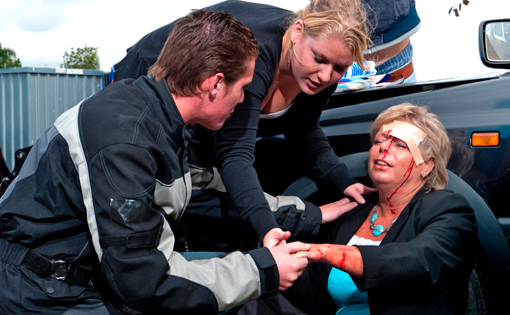BY BOB CRESCENZO
No chauffeur plans to have an accident; crashes are sudden and unexpected events. However, what you, your employees and your drivers can plan for is how to manage the people and the scene when an accident occurs. By having a crisis management plan in place and properly training your staff in executing the plan, you can help keep your drivers safe, and protect your passengers and your company’s reputation. It can also have a tremendous impact on the outcome of the claim.
 The following are the key components your chauffeurs should know in order to effectively manage the scene of an accident:
The following are the key components your chauffeurs should know in order to effectively manage the scene of an accident:
- Protecting passengers by securing the scene
- Getting help from local authorities
- Assisting others at the scene
- Gathering and exchanging information
- Assess the situation and determine if passengers are okay; determine if the vehicle is stopped where it is blocking traffic and needs to be moved.
- Protect the vehicle from being involved in an additional incident by activating the four-way flashers and setting out warning devices (move the vehicle if it creates a hazard).
- Call the police, your company and your insurance company, even if all the information is not available; alert emergency responders if there are injuries.
- Assist the injured, but only provide first aid if personally trained and certified.
- Assist passengers and make them comfortable, if possible.
- If there are no injuries, attempt to provide the passengers with another vehicle to complete their trip.
- Exchange information with other parties involved. AVOID confrontation or admitting liability. Stay calm and professional. Follow the company’s policy with respect to making statements to police; drivers are only required to give their name, address, driver’s license information, company name, vehicle data, and insurance information.
- Obtain names, addresses and phone numbers of witnesses, nearby motorists, and pedestrians. There are an increasing number of recording devices in vehicles these days, meaning someone may have video of the accident. This increases the importance of asking anyone that has stopped at the scene whether they witnessed the crash.
- Photograph all vehicles (from four angles) and the scene (e.g., road conditions, tire marks, debris, traffic patterns, and traffic control devices). If a cellphone is used to take photos, send the photos immediately to your insurance company; avoid deleting the images until the claim adjuster has confirmed it is okay to do so.
As a result, an important element in your company’s crisis management plan is to conduct a driver’s meeting with live exercises to simulate the aftermath of a crash. Provide your chauffeurs with detailed information about who to call when an accident occurs, including the phone numbers, as well as what to expect under different accident scenarios. Have your drivers practice gathering information from each other during the training meeting. Make sure they have the opportunity to practice “taking accident pictures” during the meeting as well. Encourage your team to remain calm, make sure passengers are safe, and then follow the key steps in managing the scene.
Likewise, consider training your operations, dispatch, and maintenance staff in your company’s crisis management plan to ensure chauffeurs get the calm reassuring support they need at the accident scene. Your employees can also help the driver determine whether federal drug and alcohol testing requirements apply.
Importantly, your staff should be advised to avoid providing statements to the media unless they have been reviewed and approved by your insurance company’s claims adjuster. Employees should also be instructed to prepare and preserve your driver and maintenance files, and secure related electronic logging device materials (if applicable) as those items will be critical in the accident investigation process. It is also important to remember that any messages sent between your employees and the chauffeur, or notes taken regarding the accident can be used in court.
A few additional thoughts to consider:
- Your company’s crisis management plan should be reviewed and updated annually, at a minimum, and chauffeurs and employees should receive refresher training on a regular basis. Don’t forget to get input from your staff on ways to improve your plan.
- Anything posted on social media can be obtained and used in legal proceedings. Remind all drivers and employees to be responsible and professional, and avoid posting or commenting about anything regarding the accident or the people involved.
- Keep your company’s FMCSA Safety and Fitness Electronic Records (SAFER) information up-to-date and accurate ... you can expect the media and lawyers to look up safety ratings.
Bob Crescenzo is the Vice President for safety & loss control of Lancer Insurance Company in Long Beach, N.Y. He can be reached at bcrescenzo@lancerinsurance.com.

